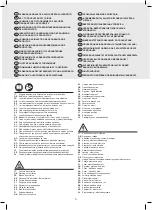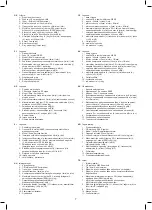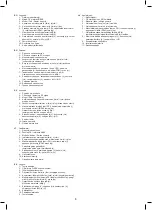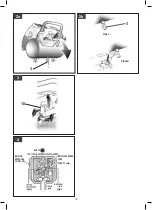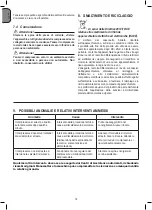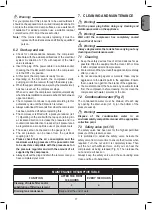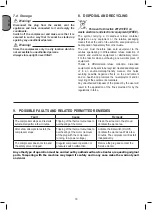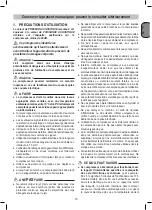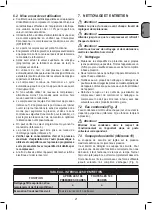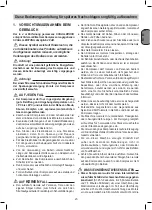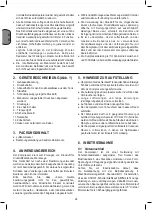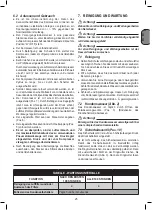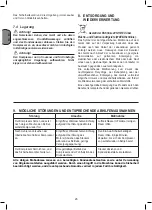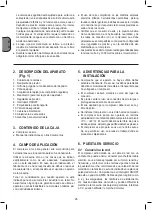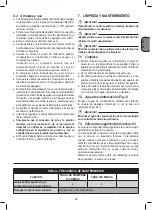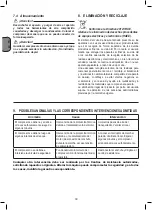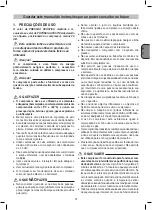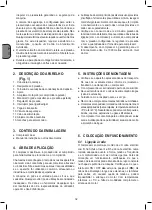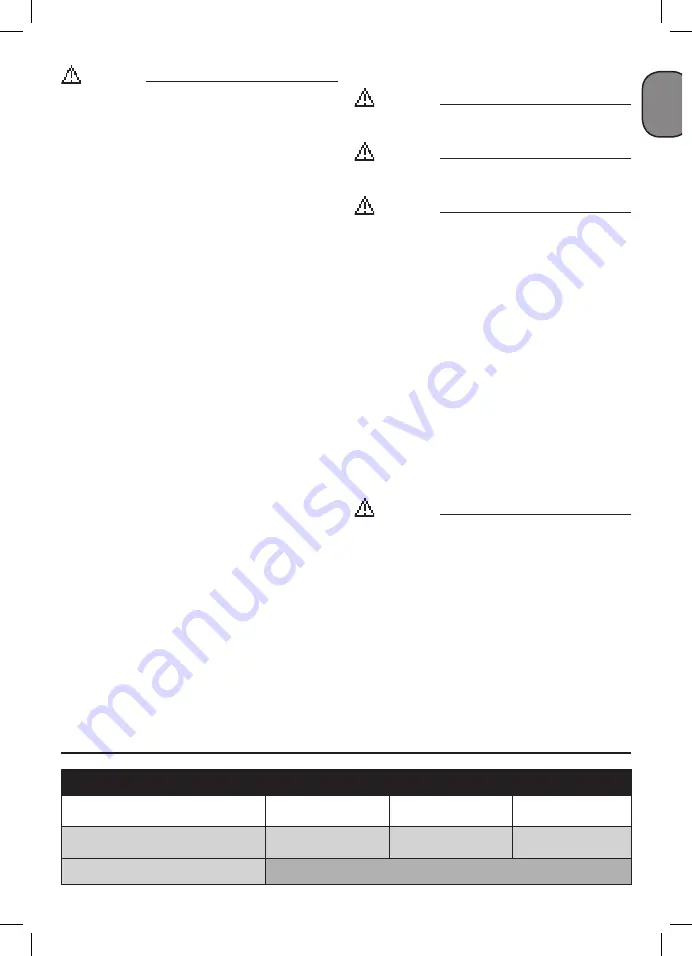
G
B
17
Warning!
For your protection if this product is to be used outdoors it
should not be exposed to rain or used in damp locations. Do
not place the product on damp surfaces, use a workbench
if available. For added protection use a suitable residual
current device (R.C.D.) at the socket outlet.
Note:
If the mains cable requires replacing it must be
replaced with an identical one and fitted by a qualified
person.
6.2 Start-up and use
●
Check for correspondence between the compressor
plate data with the actual specifications of the electrical
system. A variation of ± 10% with respect of the rated
value is allowed.
●
Insert the plug of the power cable in a suitable socket
checking that the
I/O
switch located on the compressor
is in the OFF «
O
» position.
● At this point, the compressor is ready for use.
●
Operating on the
I/O
switch, the compressor starts,
pumping air into the receiver through the delivery pipe.
●
When the upper calibration value (set by the manufacturer)
has been reached, the compressor stops.
When air is used, the compressor restarts automatically
when the lower calibration value is reached (2 bar between
upper and lower).
● The compressor continues to operate according to this
automatic cycle until the
I/O
switch is turned.
●
Always wait at least 10 seconds from when the compressor
has been switched off before restarting this.
● The compressor is fitted with a pressure reducer (ref.
7). Operating on the knob with the tap open (turning it in
a clockwise direction to increase the pressure and in a
counterclockwise direction to reduce it), air pressure can
be regulated so as to optimize use of pneumatic tools.
● The value set can be checked on the gauge (ref. 6).
● The set pressure can be taken from the quicklock
coupling (ref. 5).
●
Please check that the air consumption and the
maximum working pressure of the pneumatic tool
to be used are compatible with the pressure set on
the pressure regulator and with the amount of air
supplied by the compressor.
●
Always pull out the plug and drain the receiver once you
have completed your work.
7. CLEANING AND MAINTENANCE
Warning!
Pull the power plug before doing any cleaning and
maintenance work on the appliance.
Warning!
Wait until the compressor has completely cooled
down. Risk of burns!
Warning!
Always depressurize the tank before carrying out any
cleaning and maintenance work.
7.1 Cleaning
●
Keep the safety devices free of dirt and dust as far as
possible. Wipe the equipment with a clean cloth or blow
it with compressed air at low pressure.
●
We recommend that you clean the appliance immediately
after you use it.
●
Do not use cleaning agents or solvents; these may be
aggressive to the plastic parts in the appliance. Ensure
that no water can get into the interior of the appliance.
●
You must disconnect the hose and any pneumatic tools
from the compressor before cleaning. Do not clean the
compressor with water, solvents or the like.
7.2 Condensation water (Fig. 2)
The condensation water must be drained off each day
by opening the drain valve (ref. 3) (on the bottom of the
pressure vessel).
Warning!
Dispose of the condensation water in an
environmentally compatible manner at the appropriate
collection point.
7.3 Safety valve (ref. 10)
The safety valve has been set for the highest permitted
pressure of the pressure vessel.
It is prohibited to adjust the safety valve. Actuate the
safety valve from time to time to ensure that it works when
required. Turn the nut until it is completely loose. Then
pull the nut with sufficient force until you can hear the
compressed air being released (Fig. 3). Then release the
nut, and screw it back on.
Always keep the safety valve and the surrounding area
clean and free of obstructions.
MAINTENANCE RESUMPTIVE TABLE
FUNCTION
AFTER THE FIRST
100 HOURS
EVERY 100 HOURS
Cleaning of intake filter and/or
substitution of filtering element
●
●
Draining tank condensate
Daily and at the end of work
Summary of Contents for FATMAX FMXCMD156HE
Page 9: ...9 3 12 10 11 1 13 9 7 6 8 5 2 4 1a 1b...
Page 51: ...51 G R 1 4 20 dB 5 C 40 C 4 5 1 5 mm2 I O S3 25 2 5 7 5...
Page 52: ...52 G R 0 1000 2 1 1 2 3 4 5 6 7 8 ON OFF 9 10 11 12 13 3 4 5 5 C 40 C 6 6 1 ON OFF I ON...
Page 53: ...53 G R 5 C 6 2 10 I O O OFF I O 2 bar I O 10 7 6 5 7 7 1 7 2 2 3 7 3 10 3 100 100...
Page 54: ...54 G R 9 7 4 8 2012 19 X guata...
Page 79: ...79 R U 1 4 20 5 C 40 C 4 5 1 5 2 S325 2 5 7 5...
Page 80: ...80 R U 2 1 1 2 3 4 5 6 7 8 9 10 11 12 13 3 4 5 5 C 40 C 6 6 1 5 C 0 1000...
Page 81: ...81 R U 6 2 10 O 2 10 7 6 5 7 7 1 7 2 2 3 7 3 10 3 100 100...
Page 82: ...82 R U 7 4 8 2012 19 UE RAEE 9...
Page 95: ...B G 95 1 4 m 20 dB black out 5 C 40 C 4 5 1 5 2 I O S325 2 5 7 5...
Page 96: ...96 B G 0 1000 2 1 1 2 3 4 5 6 7 8 9 10 11 12 13 3 4 5 E 5 C 40 6 6 1 ON OFF I ON 5...
Page 97: ...B G 97 6 2 10 I O O OFF I O 2 I O 10 7 6 5 7 7 1 7 2 2 3 7 3 10 3 100 100...
Page 98: ...98 B G 7 4 8 2012 19 9...

